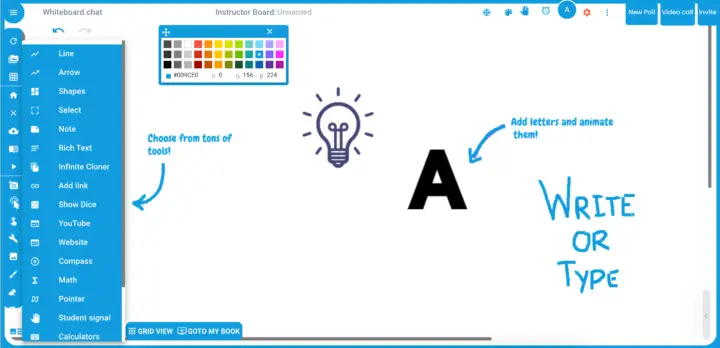How can I keep my students online with homework?

We have prepared detailed instructions for teachers and organizers of online learning on diversifying the process of distance learning. One of the features of online learning is the higher cost of student attention. If the online course program is not sufficiently valuable and exciting, it is unlikely that it will be possible to retain the student by other means.
All course elements should work on the overall impression of the course, from the lecturer in the video to homework. It is about the last element that we will talk about in this article. You will learn how to turn homework from tedious and obligatory work into an integral and expected part of the course.
Homework: Ballast or Powerful Learning Tool?

The debate over the need for homework in courses and its correct structure has long been conducted among teachers and methodologists, especially in school education. Opponents of homework cite progressive educational systems in different countries as examples. In Finland, a unique curriculum is developed for each student, there is no homework in which, and in France, it is forbidden to assign tasks to primary school students.
However, most educators, methodologists, and researchers see homework as the most accessible tool for individualizing the curriculum and developing skills that do not have enough time in the classroom.
Linda Milbourne and David Hari, in their article “Why is Homework Important?” write about the importance of homework in developing a student’s ability to learn and seek information on their own.
And Stephen Carr, in his article “Teachers and Homework,” showed that meaningful and engaging homework increases student motivation by making learning more accessible and more fun. The main thing is not to overload the students, not turn homework into something that the students and the teacher did not have time to finish in the classroom, and not make it voluminous and meaningless.
What’s the secret of good homework?

This question is answered by Yensuk Hong, Roberta Milgram, and Lonnie Rowell in their article Homework Motivation and Preference: A Learner-Centered Homework Approach.
They formulate a theoretical approach to the formation of homework based on the idea of the uniqueness of students. People assimilate information in different ways, which means that everyone needs homework differently.
The authors suggest that teachers and methodologists in homework formation should proceed from students’ motivation and their willingness to invest in work. To do this, answer in as much detail as possible these questions.
Why are students following the teacher’s request for homework? The answer to this question gives an idea of what motivates the student to learn. It can be internal interest, pressure from the environment, or the personality of the teacher.
How, where, when, and with whom does the student prefer to do their homework? Here it is essential to make the complete picture of the student’s independent work. What time of day does he do his homework? Performs all tasks at once or in parts? Works in silence or noise, daylight or artificial light, cold or warm, alone or in a group, etc. Then use the information to create alternative homework formats.
A challenging but rewarding stage follows this: offer students alternative homework formats regarding their preferences and capabilities. Those who prefer to do the task in parts break it down into mini-blocks—students with low motivation to offer a more interactive work format.
TOP 5 interesting homework formats online
Below you can find out several fascinating formats available for implementation on platforms for creating online courses:
Using interactive whiteboards

This tool allows students not only to work together but also to save the results of their work. On sites for creating online courses, the option of integrating with an interactive whiteboard is available. That tool can summarize the whole group’s homework; the format is available within the general workspace.
Format test Who are you?
Homework in the form of a test can break down homework into separate stages and automate checking it. To make the process more enjoyable, at the end you can not only show the student the results of solving problems but also add who he is from the heroes of the Harry Potter books, stars of the popular TV series, etc., depending on the percentage of correct solutions.
This will diversify the work, allow students to look for matches with other group members (so there should not be many options), and share the results in a group chat, thereby motivating other members to do their homework. If you don’t know how to create such questions, you can get ready for work, for example, on the-essays.com.
Homework in groups

One of the main disadvantages of the online format is the limited informal interaction between students. This can make up for homework in groups. You can question the interlocutors (in pre-formed pairs or groups) and use the information obtained, for example, by substituting it into a mathematical equation or some story.
It is essential to divide the participants into groups so that each team has a leader who does not forget about the deadlines, gathers other participants, and organizes the work. The built-in analytics tools help this on the platforms, which, among other things, display the activity of participants.
Challenges and marathons
One of the latest trends in fashion is challenges. You can easily integrate them into your learning process. You can start a programming or writing challenge.
And, as in real Internet challenges, the results must be shared. For example, make a publication in the news feed of your learning platform, write about them in a mailing list, or make a publication about student progress in the teacher’s account on one of the social networks.
Homework-game
The possibilities for creating exciting homework online are endless, so we recommend that you stick with the tools that are designed for this. They will help make learning more effective, practical, and more attractive.
Feel free to experiment with formats, consider the needs and characteristics of your students, and you will succeed. And to implement all ideas as conveniently and quickly as possible, create your online course on unique platforms and do it together with your students.
What are the unique features of homework in online courses?

We turned to the experts with this question. Teachers were accustomed to working with students in traditional school formats but went online during the pandemic.
They identified two criteria for a good homework assignment for distance learning:
Workspace
Both the tasks for the webinars and the homework of the online course students should do at home. This feature must be considered and used: conduct all work on one platform, enter homework with the teacher and even partially discuss so that the student perceives homework as part of a single educational process.
Additional control and motivation
It is worthwhile to detail the task as much as possible, for example, breaking the task into small stages to track the student’s mistakes, give detailed feedback, and convey the importance of completing homework. Remind them about it through mailings (this option is available on many platforms for creating online courses) and summarize the whole group’s homework in class.
